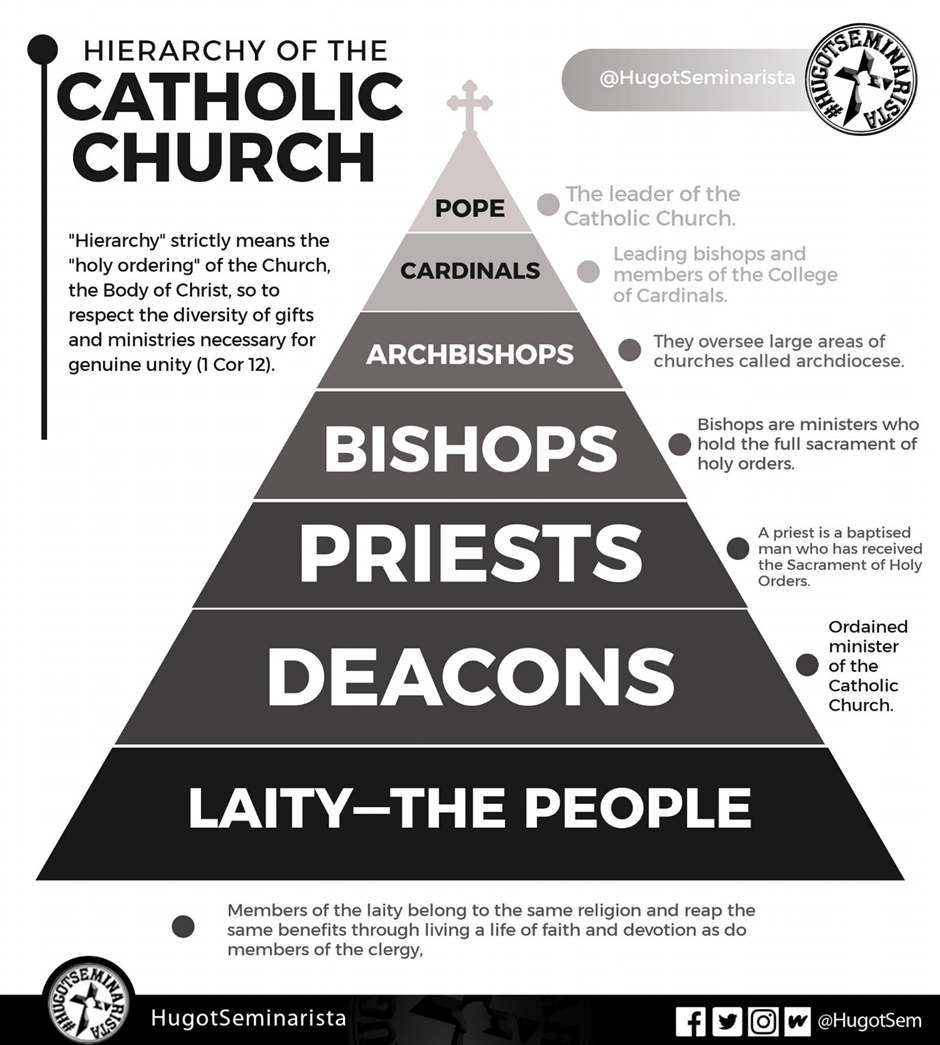2.3 Structures and Processes Explanation
1/7
There's no tags or description
Looks like no tags are added yet.
Name | Mastery | Learn | Test | Matching | Spaced |
|---|
No study sessions yet.
8 Terms
Name and outline one main structure or process of a religion and its important features (6 marks)
The Magisterium is a structure of the Catholic Church under the religion of Christianity, consisting of the Pope and the bishops in communion with him.
It is responsible for interpreting and preserving the teachings of the Church.
Catholics believe that the Popes and bishops received their authority from Jesus through the Apostles, using ‘apostolic succession’. (CCC 77)
This structure fulfils the teaching role by interpreting the Word of God, both in Scripture and Tradition. It provides teachings on faith and morals, guiding Catholics on how to live according to the Gospel
When the Pope or the bishops in union with him declare a teaching, it is considered to be infallible, where it is free from error. This is particularly exercised in ecumenical councils or when the Pope declares something as ex cathedra, from the chair of St. Peter
The Magisterium is also involved in the development of doctrine, responding to new challenges and questions over time. This ensures that the Church remain relevant and true to Jesus’ teachings.
q, purpose, authority, teach, infallible, development
Outline an example that illustrates the role this structure or process plays in a religion (4 marks)
The Catechism of the Catholic Church (CCC) is an example of how the structure of the Magisterium exercises its teaching role.
Published under Pope John Paul II in 1992, it is a Universal Ordinary authorative text that summarises the teachings and beliefs of the Church.
It is used by bishops, priest, and laypeople as a key resource for teaching the faith, providing clear and authorative teachings on a wide range of topics.
As an explanation of Catholic doctrine, it draws on Scripture, Tradition, and the Church's Magisterium, to ensure consistency in the teachings of faith.
Define religious structure (2 marks)
Religious structures refer to the organisation of a religion, including its leadership. The way a religion is organised and led is complex and needs to be seen as a system rather than a collection of parts.
Define religious process (2 marks)
Religious processes refer to how things are done in a religion. They give expression to the workings of a particular religious structure. Typically, there is a system or way of doing something according to series of steps, actions or understandings.
Outline the overall purpose of religious structures and processes (3 marks)
teaching and safeguarding the Christian message
preaching and explaining the Gospel as well as determining whether the teachings of individuals or groups of Christian accurately expressed the Gospel of Jesus
sanctify / providing for the growing holiness of believers
guiding believers in their prayer life and the celebration of the Sacraments, ensuring that these remained authentic to Jesus
governing the Church in Jesus’ name
to govern in a spirit of service, inviting other Catholics to join in the Christian mission to humanity and the life and mission of the Church
Outline a process used by a particular religion (3 marks)
The Papal Conclave is an ecclesiastical process used by the Roman Catholic Church under the religion of Christianity, by which the College of Cardinals elect a new Pope following the vacancy of the Apostolic See.
The cardinals are to be kept in conclave, a secret assembly, in the Sistine Chapel in complete isolation from external influence for the election.
The election involves multiple rounds where each of them casts an anonymous nomination, also known as a “scrutiny”. A two thirds majority is required to elect the new Pope.
Once a Pope is elected, it is then announced from the balcony of St. Peter’s Basilica with the traditional declaration, “Habemus Papam” (We have a Pope).
Construct a clearly labelled diagram that illustrates an important religious structure for a particular religion (3 marks)
The Church as an Institution: The Structure of the Magisterium
pope - leader of the Catholic Church
cardinals - leading bishops and members of the College of Cardinals
archbishops - oversee archdiocese
bishops - minister who hold the full sacrament of the Holy Orders
priests - baptised male who has received Holy Orders
deacons - ordained minister of the Catholic Church
laity - the people

Ecumenical council
When the Pope gathers the bishops around the world in order to address matters of faith, morals and Christian teachings. They respond to crises, affirm doctrine, and enact reforms in the Church. The entire Church is represented at this council and is only considered ecumenical once its decisions are approved by the Pope.